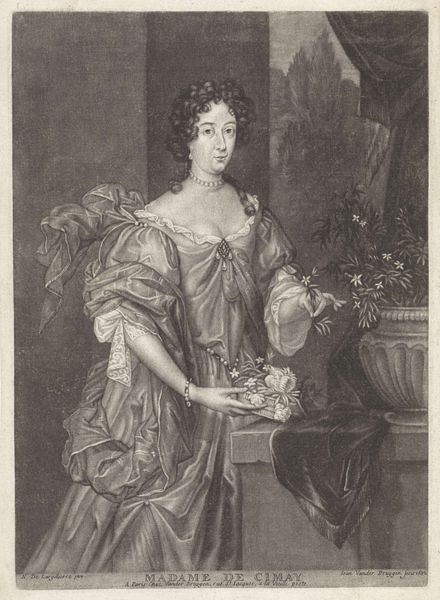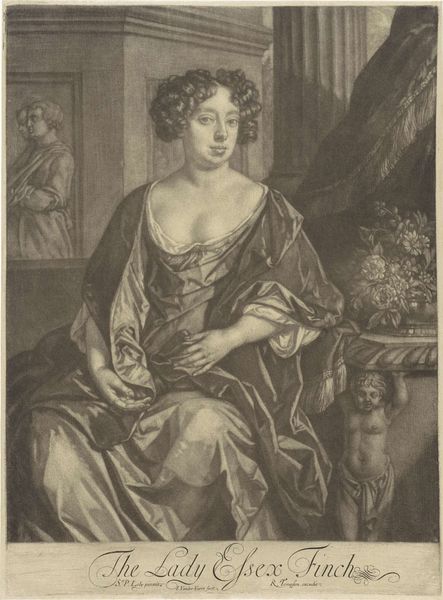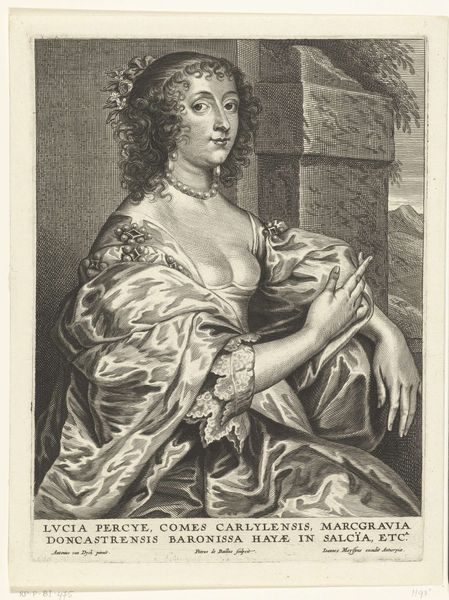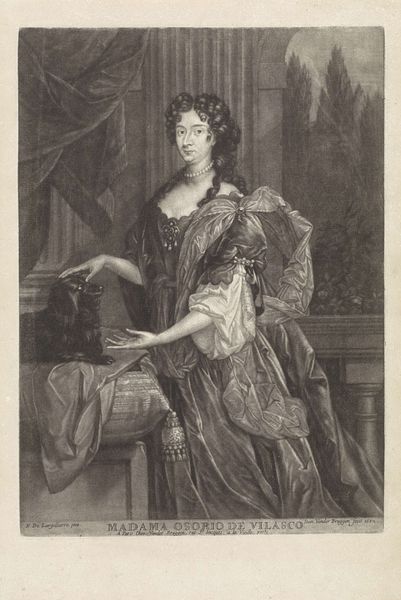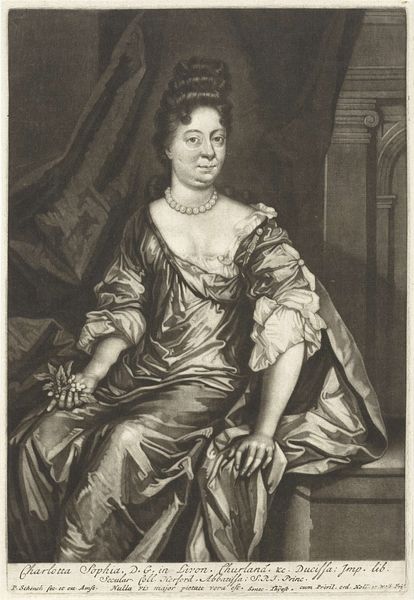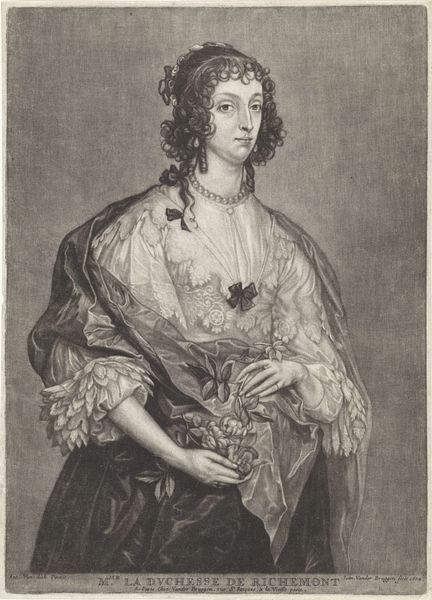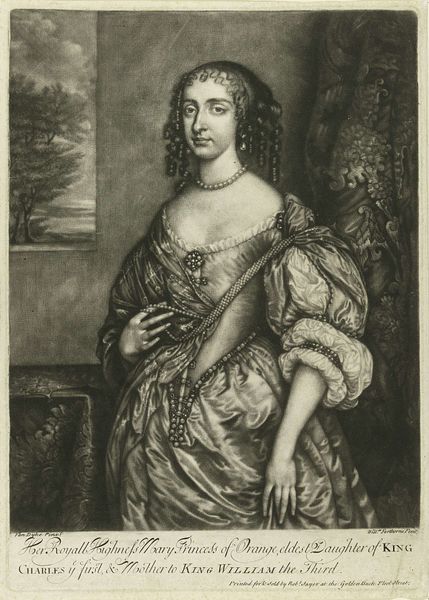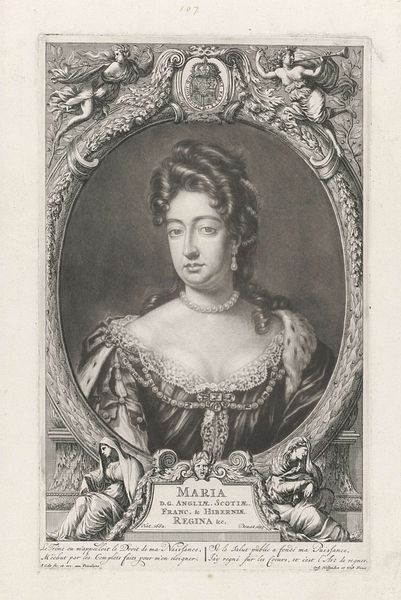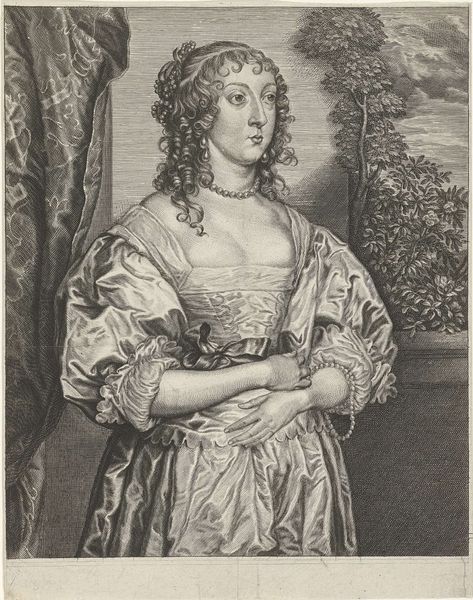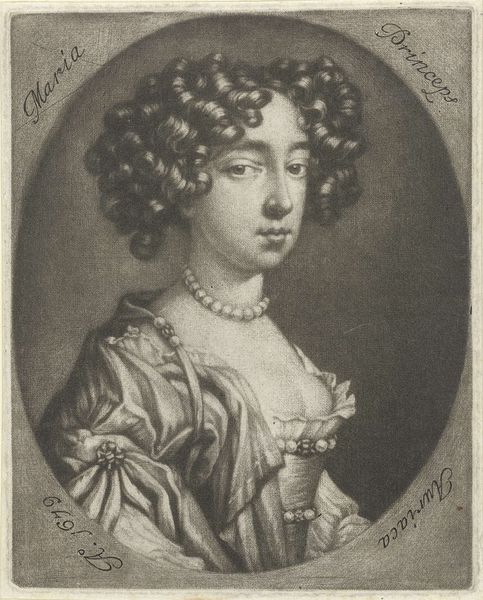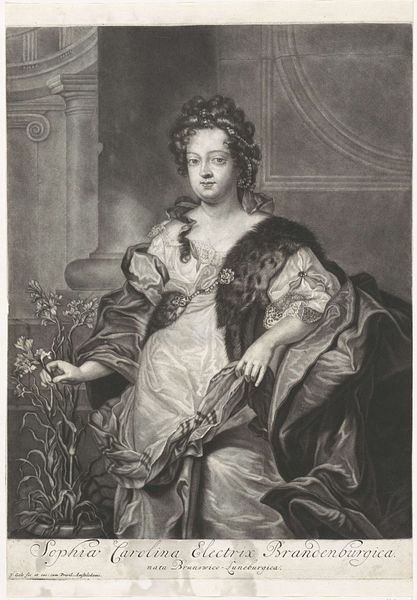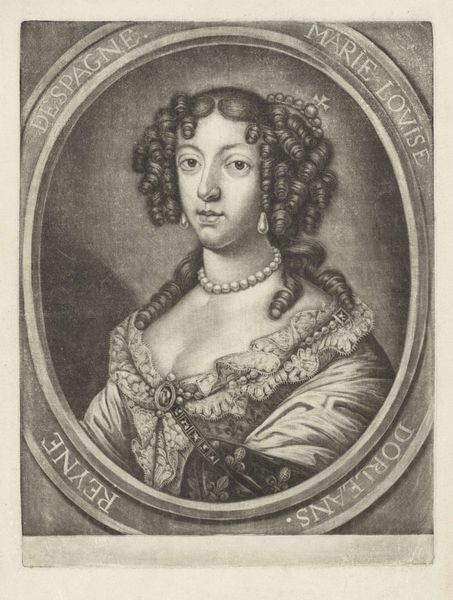
engraving
#
portrait
#
baroque
#
historical photography
#
portrait reference
#
history-painting
#
engraving
Dimensions: height 303 mm, width 216 mm
Copyright: Rijks Museum: Open Domain
Jan van der Bruggen made this print of Isabella d’Orleans, Duchess of Guise, sometime between 1649 and 1709. Its existence as a print speaks to the growing commodification of images and the ways they were used to circulate ideas about status and power. Born into one of Europe’s most influential families, Isabella d’Orleans became Duchess of Guise through marriage. The portrait presents her as an emblem of aristocratic refinement. Her elaborate dress, styled hair, and serene expression conform to the conventions of court portraiture in France. But the print also flattens her, turning her into a type. This may be the point: in 17th and 18th century Europe, printed images were a means of broadcasting status. The image insists on the sitter’s place within a network of social connections, the material sign of a lineage. To understand this print, we need to look at the historical context in which it was made. Research into the history of the House of Guise and the development of printmaking will help you understand its significance.
Comments
No comments
Be the first to comment and join the conversation on the ultimate creative platform.
